Top 10 Foods Highest in Vitamin B12 (Cobalamin)

Vitamin B12, or Cobalamin, is necessary for many different processes throughout the body, including making DNA and creating energy in our cells. (1) A deficiency of vitamin B12 can lead to a variety of symptoms, including anemia, fatigue, mania, and depression. A long-term deficiency can cause permanent damage to the brain and other parts of the nervous system. (2)
Vitamin B12 is created by bacteria and can only be found naturally in animal products. (1) However, synthetic forms are widely available and added to many foods such as packaged cereals.
Vitamin B12 is a water-soluble vitamin, so the body is able to easily get rid of excess. This is why it's considered a safe vitamin, and there is no established upper limit for consumption. However, extremely high doses can cause bothersome symptoms. (3)
The liver stores enough vitamin B12 to last for several years, which is why it usually takes a long time for a person to realize that they have a deficiency of this vitamin.(1)
High vitamin B12 foods include clams, fish, crab, low-fat beef, fortified cereal, fortified soymilk, fortified tofu, low-fat dairy, cheese, and eggs. The daily value (DV) for vitamin B12 is 2.4mcg per day. In 2016, this was reduced from 6mcg per day, because the scientific evidence shows that 2.4mcg is enough to prevent symptoms of deficiency in the majority of people. (4) For this reason, the percentage of the daily value (%DV) may appear lower on outdated product labels.
Below are the top 10 foods highest in vitamin B12, click here for an extended list of vitamin B12 rich foods, and here for other foods high in vitamin B.
If you are vegetarian, see the article on vegetarian sources of vitamin B12.
List of Foods High in Vitamin B12
-
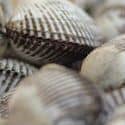 1. Clams + Add
1. Clams + Add
Vitamin B12
per 3oz ServingVitamin B12
per 100gVitamin B12
per 200 Calories84.1mcg
(3502% DV)98.9mcg
(4120% DV)133.6mcg
(5568% DV)Other Shellfish High in Vitamin B12
- 1020% DV in 3oz of oysters
- 850% DV in 3oz of mussels
- 76% DV in 3oz of scallops
3oz is equal to roughly 3 oysters, 5 mussels, and 10 small scallops respectively.
See all fish high in vitamin b12.
-
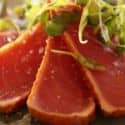 2. Tuna + Add
2. Tuna + Add
Vitamin B12
per 6oz FilletVitamin B12
per 100gVitamin B12
per 200 Calories18.5mcg
(771% DV)10.9mcg
(453% DV)11.8mcg
(493% DV)Other Fish High in Vitamin B12
- 783% DV per 5oz fillet of Atlantic herring
- 1346% DV in a 6oz mackerel fillet
- 555% DV per cup of canned sardines
- 375% DV in a 5oz trout fillet
- 248% DV per 6oz snapper fillet
- 39% DV in 1oz of smoked salmon
See the list of canned fish high in vitamin b12.
-
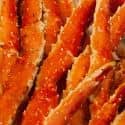 3. King Crab + Add
3. King Crab + Add
Vitamin B12
in 1 Crab LegVitamin B12
per 100gVitamin B12
per 200 Calories15.4mcg
(642% DV)11.5mcg
(479% DV)23.7mcg
(988% DV)Other Crustaceans High in Vitamin B12
- 368% DV in 3oz of Dungeness crab
- 187% DV in 1 cup of canned blue crab
- 110% DV in 3oz of crayfish
- 59% DV in 3oz of shrimp
- 51% DV in 3oz of lobster
See all fish high in vitamin b12.
-
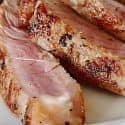 4. Beef (Skirt Steak) + Add
4. Beef (Skirt Steak) + Add
Vitamin B12
per 6oz SteakVitamin B12
per 100gVitamin B12
per 200 Calories12.8mcg
(533% DV)7.5mcg
(314% DV)5.6mcg
(234% DV)More Red Meat High in Vitamin B12
- 112% DV in 3oz of broiled beef round
- 101% DV in 3oz of lean roast buffalo
- 99% DV per 3oz beef hamburger
- 96% DV in 3oz of roast lamb shank
- 93% DV per 3oz of beef short ribs
See all meats high in vitamin B12.
-
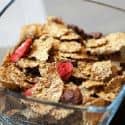 5. Fortified Cereals + Add
5. Fortified Cereals + Add
Vitamin B12
per 3/4 CupVitamin B12
per 100gVitamin B12
per 200 Calories6.1mcg
(254% DV)21mcg
(875% DV)12.8mcg
(535% DV)More Cereals High in Vitamin B12
- 251% DV per cup of Kellogg's Special K
- 250% DV per cup of General Mills Whole Grain Total
- 250% DV per 2/3 cup of Kellogg's Low Fat Granola
- 250% DV per cup of Kashi Heart to Heart Oat Flakes
- 125% DV per 3/4 cup of Wheaties
- 121% DV per 3/4 cup of Post Honey Bunches of Oats
See the complete ranking of 200 cereals high in vitamin B12.
-
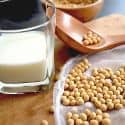 6. Fortified Soymilk + Add
6. Fortified Soymilk + Add
Vitamin B12
per 16oz GlassVitamin B12
per 100gVitamin B12
per 200 Calories6mcg
(249% DV)1.2mcg
(51% DV)7.5mcg
(311% DV)Other Milk Substitutes High in Vitamin B12
- 250% DV in a 16oz glass of fortified almond milk
- 250% DV in a 16oz glass of fortified coconut milk drink
- 126% DV in a 16oz glass of rice milk
The quantity of vitamin B12 can vary greatly, check product labels.
See more vegetarian sources of vitamin B12.
-
 7. Fortified Tofu + Add
7. Fortified Tofu + Add
Vitamin B12
per CupVitamin B12
per 100gVitamin B12
per 200 Calories3.3mcg
(137% DV)1.5mcg
(60% DV)3.2mcg
(131% DV)See more vegetarian sources of vitamin B12.
-
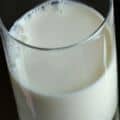 8. Low-Fat Milk + Add
8. Low-Fat Milk + Add
Vitamin B12
per 16oz GlassVitamin B12
per 100gVitamin B12
per 200 Calories2.6mcg
(108% DV)0.5mcg
(22% DV)2.1mcg
(88% DV)More Dairy Foods High in Vitamin B12
- 108% DV in a 16oz glass of low fat milk
- 96% DV in a 16oz glass of whole milk
- 62% DV per cup of non-fat yogurt
- 38% DV per cup of plain yogurt
- 51% DV per cup of hot chocolate
- 48% DV in a 1/4 cup of buttermilk
- 18% DV per 1/2 cup of soft serve ice-cream
See the full list of dairy foods high in vitamin B12.
-
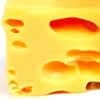 9. Swiss Cheese + Add
9. Swiss Cheese + Add
Vitamin B12
per OzVitamin B12
per 100gVitamin B12
per 200 Calories0.9mcg
(36% DV)3.1mcg
(128% DV)1.6mcg
(65% DV)Other Cheeses High in Vitamin B12
- 29% DV per oz of gjetost
- 27% DV per oz of mozzarella
- 22% DV per 1/2 cup of cottage cheese
- 20% DV per oz of feta
- 20% DV per oz of brie
- 19% DV per oz of gruyere
- 18% DV per oz of gouda
- 18% DV per 1/2 cup of ricotta
See the list of high vitamin B12 cheeses.
-
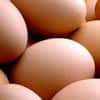 10. Eggs + Add
10. Eggs + Add
Vitamin B12
in 1 Large EggVitamin B12
per 100gVitamin B12
per 200 Calories0.6mcg
(23% DV)1.1mcg
(46% DV)1.4mcg
(60% DV)More Eggs High in Vitamin B12
- 70% DV in 1 cup of scrambled eggs
- 63% DV in 1 cup of chopped hard-boiled eggs
- 306% DV in a goose egg
- 158% DV in a duck egg
- 56% DV in a turkey egg
Note: Vitamin B12 found in eggs is concentrated in the yolks. Egg whites contain very little B12.
Printable One Page Sheet
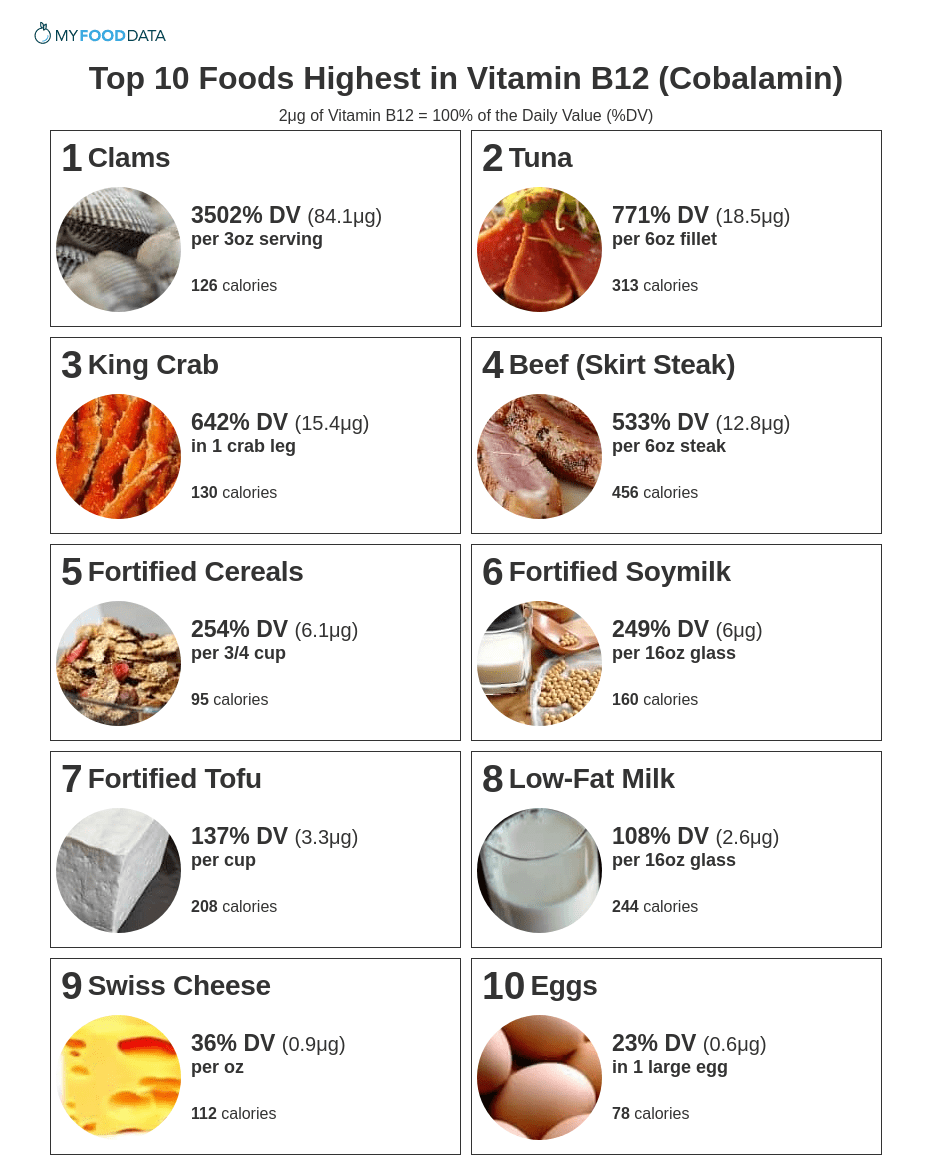
High Vitamin B12 Foods by Nutrient Density (Vitamin B12 per Gram)
| Food | Serving | Vitamin B12 |
|---|---|---|
| 1. Clams + | 100 grams | 4120% DV (98.9mcg) |
| 2. Octopus + | 100 grams | 1500% DV (36mcg) |
| 3. Shellfish (Oysters) + | 100 grams | 1200% DV (28.8mcg) |
| 4. Mussels + | 100 grams | 1000% DV (24mcg) |
| 5. Pork Liver Sausage + | 100 grams | 837% DV (20.1mcg) |
| 6. Fish (Mackerel) + | 100 grams | 792% DV (19mcg) |
| 7. Kippered Herring + | 100 grams | 779% DV (18.7mcg) |
| 8. Liverwurst Spread + | 100 grams | 561% DV (13.5mcg) |
| 9. King Crab + | 100 grams | 479% DV (11.5mcg) |
| 10. Tuna + | 100 grams | 453% DV (10.9mcg) |
Other Vitamin B12 Rich Foods
| Food | Serving | Vitamin B12 |
|---|---|---|
| 1. Whelk + | 3oz | 642% DV (15.4mcg) |
| 2. New England Clam Chowder + | per cup | 478% DV (11.5mcg) |
| 3. Veggie Burgers + | 1 burger pattie | 366% DV (8.8mcg) |
| 4. Manhattan Clam Chowder + | 1 cup | 330% DV (7.9mcg) |
| 5. Liver Sausage + | 1oz | 238% DV (5.7mcg) |
| 6. Ostrich + | 3oz | 228% DV (5.5mcg) |
| 7. Energy Bars + | 1 bar | 172% DV (4.1mcg) |
| 8. Deer (Venison) + | 3oz | 128% DV (3.1mcg) |
| 9. Salami + | per 3oz | 99% DV (2.4mcg) |
| 10. Scallops + | per 3oz | 76% DV (1.8mcg) |
| 11. Rice Milk + | 1 cup | 63% DV (1.5mcg) |
| 12. Buttermilk + | 1 cup | 47% DV (1.1mcg) |
| 13. Turkey + | 3oz | 36% DV (0.9mcg) |
| 14. Luncheon Meat + | 1 slice | 19% DV (0.5mcg) |
| 15. Whey Powder + | per tbsp | 7% DV (0.2mcg) |
Sources of Vegan and Vegetarian B12
Vitamin B12 is exclusively made by bacteria, with animal and plant cells unable to synthesize this vitamin. Animals generally acquire it from bacteria that live in their digestive tracts, or by eating food sources that contain it. Vitamin B12 then makes its way into the flesh and milk of the animal.(5)
Animal based foods (meat, cheese, fish, milk, eggs) provide vitamin B12 naturally, so all vegan foods with vitamin B12 are fortified. See our article on vegetarian vitamin B12 sources to find both natural vegetarian foods (milk and eggs), and fortified b12 foods (soymilk, tofu, vitamin water).
How Much Vitamin B12 Do You Need?
The recommended daily allowance (RDA) for Vitamin B12 ranges from 0.4 to 2.8mcg per day. The daily value (DV) for vitamin B12 is 2.4mcg per day. (4) In 2016, this was reduced from 6mcg per day, because the scientific evidence shows that 2.4mcg is enough to prevent symptoms of deficiency in the majority of people.
| Life Stage | RDA |
|---|---|
| Infants* | |
| 0-6 months old | 0.4mcg |
| 7-12 months old | 0.5mcg |
| Children | |
| 1-3 years old | 0.9mcg |
| 4-8 years old | 1.2mcg |
| Males | |
| 9-13 years old | 1.8mcg |
| 14-18 years old | 2.4mcg |
| 19-50 years old | 2.4mcg |
| 50+ years old | 2.4mcg |
| Females | |
| 9-13 years old | 1.8mcg |
| 14-18 years old | 2.4mcg |
| 19-50 years old | 2.4mcg |
| 50+ years old | 2.4mcg |
| Pregnancy | |
| 14-18 years old | 2.6mcg |
| 18+ years old | 2.6mcg |
| Lactation | |
| 14-18 years old | 2.8mcg |
| 18+ years old | 2.8mcg |
Source: Dietary Reference Intakes for Vitamin B12.
People at Risk of a Vitamin B12 Deficiency
- People with Atrophic Gastritis - Atrophic gastritis is a condition involving chronic inflammation of the lining of the stomach, which leads to thinning of the lining. This reduces the body's ability to absorb vitamin B12. Supplements are recommended for people in this group. (6)
- People with Pernicious Anemia - Pernicious anemia is a condition that affects the stomach's ability to synthesize intrinsic factor, a substance which is necessary for the absorption of vitamin B12. This condition is common, affecting 8-9% of people age 65 and older. People with pernicious anemia usually receive vitamin B12 through injections. (7)
- Vegans and Vegetarians - Vitamin B12 is manufactured by bacteria, which live in the digestive tracts of certain animals, but not in those of humans. (5) As such vitamin B12 is only naturally found in animal products. Natural vegetarian foods high in vitamin B12 include milk, cheese, and eggs.
- People taking Certain Medications
- Proton pump inhibitors, such as omeprazole (Prilosec) and lansoprazole (Prevacid), which are used to treat gastric or peptic ulcer disease, can inhibit absorption of vitamin B12. (8,9)
- Histamine antagonists, such as cimetidine (Tagamet), famotidine (Pepcid), and ranitidine (Zantac), which are also used to treat peptic ulcer disease, can reduce absorption of vitamin B12 by slowing the release of hydrochloric acid into the stomach. (8)
- Metformin - often used for type II diabetes, Metformin may interfere with vitamin B12 absorption in certain people. (10)
- Anticonvulsants - Anticonvulsants are used to treat epilepsy, and can also be used as mood stabilizers for people with bipolar disorder. Certain anticonvulsants have been found to reduce vitamin B12 levels, and supplementation is usually recommended for people taking these drugs. (11)
Sublingual B12 or B12 Injections?
Only a small percentage of vitamin B12 taken orally is absorbed, and the absorption is further reduced in people with conditions like pernicious anemia. Because of this, doctors typically recommend B12 injections, which bypass the digestive system and enter the bloodstream directly.
Vitamin B12 can also be taken orally in the form of a pill or tablet, or in the form of a sublingual lozenge. These two forms appear to be equivalent in terms of absorption of the vitamin. (12)
An intranasal vitamin B12 gel also exists as a way to boost vitamin B12 levels. Talk to your doctor or primary care provider about this method, if you prefer it over injections. (13)
Vitamin B12 comes in multiple different forms, including methylcobalamin, cyanocobalamin, and hydroxycobalamin. All of these forms are bioavailable, and are converted within the body to active forms of the vitamin. Some evidence does suggest that cyanocobalamin may be somewhat more bioavailable than other forms. (14)
Health Benefits of Vitamin B12
- Protection Against Heart Disease - Adequate levels of vitamins B12, B6, and B9 have been shown to lower levels of a protein in the blood known as homocysteine. High levels of homocysteine have been shown to cause damage to blood vessels, and lowering the levels of this substance can help to improve blood vessel function, which in turn may boost cardiovascular health and decrease the risk of heart attacks. (15)
- Protect and Repair DNA to Reduce Cancer Risk and Slow Aging - Absorption of vitamin B12 and Folate (B9) is essential for DNA metabolism and maintenance, which may reduce the risk of cancer and slow down aging. (16)
- Protect Against Dementia and Cognitive Decline - Vitamin B12 is important for nervous system functions, including cognition and memory. Some studies have linked low vitamin B12 levels and high homocysteine levels to an increased risk of cognitive impairment and dementia. In people with vitamin B12 deficiency, replacing B12 has been shown to lead to memory improvements in many cases. Although more research is needed to confirm this association, it's currently believed that maintaining adequate vitamin B12 levels could help to reduce the risk of dementia. (17)
- Energy and Endurance - Vitamin B12 deficiency leads to anemia, low energy, and weakness. (1) Adequate levels of vitamin B12 are necessary to maintain normal energy levels. However, in people who have normal B12 levels, taking extra B12 has not been shown to improve athletic performance or lead to increased energy levels. (18)
More Vitamin B Foods
From the Nutrient Ranking Tool
Use the ranking tool links below to select foods and create your own food list to share or print.
- Foods High in Vitamin B12
- Foods Low in Vitamin B12
- Vegetarian Foods High in Vitamin B12
- Dairy High in Vitamin B12
- Breakfast Cereals High in Vitamin B12
- Fast Foods High in Vitamin B12
View more nutrients with the nutrient ranking tool, or see ratios with the nutrient ratio tool.
Related
Data Sources and References
- Vitamin B12 in health and disease
- Effects of vitamin B12 and folate deficiency on brain development in children
- Toxicity induced by multiple high doses of vitamin B12 during pernicious anemia treatment: a case report
- U.S.FDA - Daily Value on the New Nutrition and Supplement Facts Labels
- Microbial production of vitamin B12
- Chronic Atrophic Gastritis: A Review
- Pernicious Anemia: The Hematological Presentation of a Multifaceted Disorder Caused by Cobalamin Deficiency
- Association between vitamin B12 deficiency and long-term use of acid-lowering agents: a systematic review and meta-analysis
- Sánchez DP, Guillén JJ, Torres AM, Sánchez FI. Proton pump inhibitor and histamine 2 receptor antagonist use and vitamin B12 deficiency Aten Primaria. 2014 Jun-Jul;46(6):315-6. doi: 10.1016/j.aprim.2014.01.003. Epub 2014 Apr 1. 24697916
- Ruscin JM, Page RL 2nd, Valuck RJ. Proton Pump Inhibitors, H2-Receptor Antagonists, Metformin, and Vitamin B-12 Deficiency: Clinical Implications Ann Pharmacother. 2002 May;36(5):812-6. doi: 10.1345/aph.10325. 11978157
- Ray K. Antiepileptic drugs interact with folate and vitamin B12 serum levels Nat Rev Neurol. 2011 Mar;7(3):125. doi: 10.1038/nrneurol.2011.9. 21509997
- Replacement therapy for vitamin B12 deficiency: comparison between the sublingual and oral route
- Patient acceptance of intranasal cobalamin gel for vitamin B12 replacement therapy
- Selinger E, Kühn T, Procházková M, Anděl M, Gojda J. Efficacy of supplementation with methylcobalamin and cyancobalamin in maintaining the level of serum holotranscobalamin in a group of plant-based diet (vegan) adults Nutrients. 2019 Dec 10;11(12):3019. doi: 10.3390/nu11123019. 31835560
- Larsson SC, Traylor M, Markus HS. Homocysteine, B vitamins, and cardiovascular disease: a Mendelian randomization study Ann Neurol. 2019 Apr;85(4):495-501. doi: 10.1002/ana.25440. Epub 2019 Mar 11. 30785218
- Fenech M. The role of folic acid and Vitamin B12 in genomic stability of human cells Mutat Res. 2012 May 1;733(1-2):21-33. doi: 10.1016/j.mrfmmm.2011.11.003. Epub 2011 Nov 7. 22093367
- Malouf M, Grimley EJ, Areosa SA. Low Vitamin B12 Levels: An Underestimated Cause Of Minimal Cognitive Impairment And Dementia Cochrane Database Syst Rev. 2003;(4):CD004514. doi: 10.1002/14651858.CD004514. 14584018
- Bourre JM. Vitamins and Minerals for Energy, Fatigue and Cognition: A Narrative Review of the Biochemical and Clinical Evidence J Nutr Health Aging. 2006 Sep-Oct;10(5):377-85. 17066209
Simplify Nutrition Tracking with MyFoodData!
Speedy Tools and Detailed Data FREEEasily analyze your meals to find the best foods for your goals.
✅ Use our recipe nutrition calculator and nutrition comparison tool.
✅ Access expert nutrition data tools and in-depth articles.
✅ Log foods and organize your recipes with a free account.


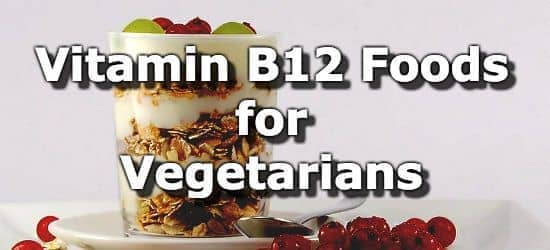 Next ➞
Next ➞
